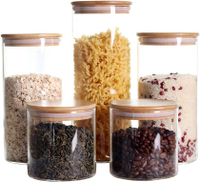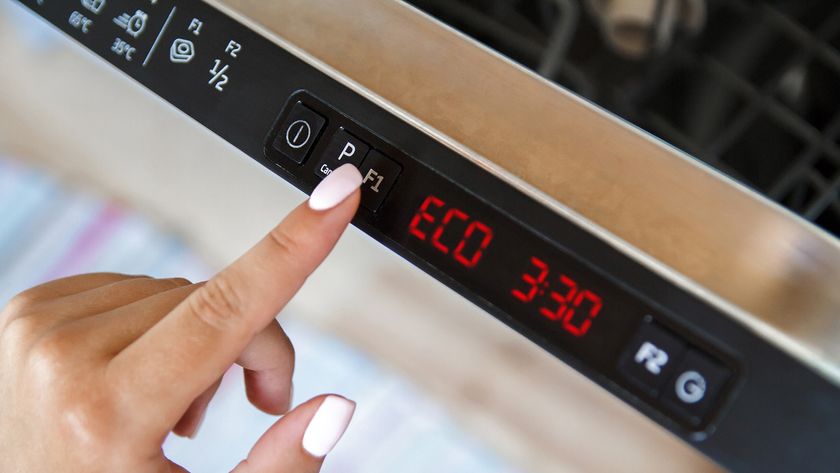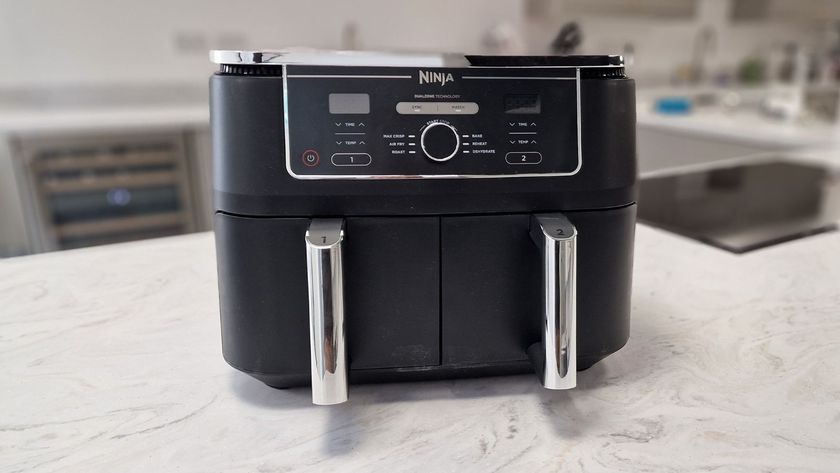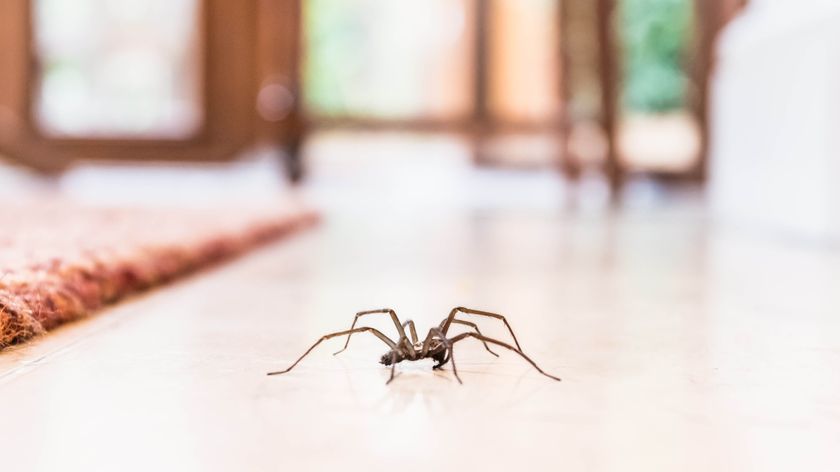5 foods that attract mice to your kitchen — tips from a pest expert
Don’t leave these foods lying around

Nobody likes the thought of having a pest problem, especially when you’ve spotted the telltale signs you have mice. Not only can mice become a nuisance, but they can cause serious damage to your property by chewing on woodwork, electrical cables or gas and water pipes.
But if you’ve tried everything to get rid of mice, why do they still come back? According to experts, even if you haven’t spotted a mouse yet, you could unknowingly have certain foods that attract mice to your kitchen. Be it stray crumbs left on the floor, unsealed boxes in your pantry, or things that are sitting in the trashcan, these can all entice mice. It isn’t any wonder that they want to come back for more.
Knowing what their favorite foods are will help you take action, and hide away any foods that they could be feasting on. In addition, this may indicate any problem areas where mice might be entering — in which case, you’ll need to block all points of entry.
So, if you don’t want any uninvited guests at night, clean up these foods that attract mice to your kitchen, according to pest experts.
1. Cereals and grains

Whether you’re rushing breakfast time in the morning, or accidentally spill dried rice on the floor, don’t forget to clean it up immediately, as these foods are particularly popular with mice.
“Unsealed cereal boxes, rice, pasta, and other grains can be very attractive to mice,” says John Stewart, pest prevention specialist at Pelsis Group. “These foods are high in carbohydrates, providing mice with a good energy source.”
To prevent mice rummaging in your unsealed packaging, decanter cereals and grains into clear jars or airtight storage canisters, before labelling the contents. “Foods not in jars or tins are more susceptible to damage from rodents, things like packets and cardboard boxes. They are better stored in glass or plastic containers with a date label after purchase”.
Sign up to get the BEST of Tom's Guide direct to your inbox.
Get instant access to breaking news, the hottest reviews, great deals and helpful tips.
To also help you best organize your pantry, invest in BPA-free food, airtight storage containers like these LEAVES AND TREES Y Stackable Kitchen Canisters Set ($22, Amazon), that will prevent mice.
LEAVES AND TREES Y Stackable Kitchen Canisters Set: $22 @ Amazon
This 5-piece set of airtight, storage canisters are ideal for storing foods in your pantry. Made from glass, these are considered better than plastic, in keeping food fresh longer. In addition, with their attractive, bamboo lids, these will make a stylish feature in your kitchen.
2. Sweets and chocolate

It seems like we’re not the only ones who enjoy snacking on tasty, sweet treats. Mice tend to like high fat, protein and high sugar food sources.
“Mice tend to be attracted to foods that are high in protein, fat or sugar,” says Joshua Houston, Pest Control Expert at Household Quotes. “These can include; chocolate, butter, lard, sweets and nuts. To avoid mice getting to these foods, secure items inside your fridge or cupboards. Then if you drop any food, clean it up at the first opportunity to do so, people often get mice infestations due to foods they've spilled and forgot to clean up.”
One of the key reasons why mice love such foods is because the high sugars provide instant energy for such pests to store. “Mice have a sweet tooth and will go for sweets and chocolate if they have access to them,” agrees Stewart. “Sugars provide a quick energy source, and mice have a natural preference for sweet flavors.” In fact, mice can detect the strong smell of chocolate from a distance, so it’s best to keep your favorite snacks locked away from pests.
3. Bread and baked goods
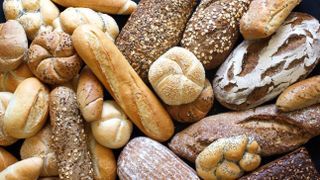
If you enjoy baking or making fresh loaves on one of the best bread machines, you might want to beware of leaving crumbs lying around. Mice are omnivorous, and have a special love for any foods that are high in carbohydrates. “Bread, cakes, biscuits, and other baked goods can be a significant draw for mice”, says Stewart. “High in carbohydrates, these foods offer a quick energy boost.”
Again, always store bread or cake treats in an airtight container or bread box like this Home-it Stainless Steel Bread Box ($29, Amazon), so mice won’t get easy access to your bakes. “Mice will gnaw through food packaging to gain access to a nutritious snack, they only require 3 grams of food per day, thus keeping a clean kitchen is paramount.”
4. Fruits and vegetables
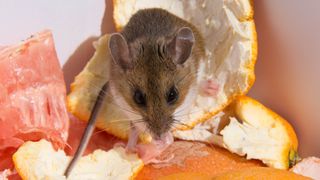
Similarly, juicy fruits and veggies can offer the sweetness and also, the hydration that mice crave. “Fresh produce, especially if it is left out on counters or not properly stored, provide vitamins and hydration, which are important for mice, especially in dry environments", agrees Stewart.
If storing fruit in the fridge is not an option, air-tight containers will keep mice from smelling and getting to fruit. In addition, be sure to dispose of citrus peels, banana skins or any other organic waste in either a compost bin, or sealed, trash can.
“Where possible, switch to metal containers for your garbage,” advises Andrea Philips, pest expert from Airtasker. “The average adult mouse only needs a few grams of food each day to survive, so generations of mice can happily thrive around your trash can areas forever. The cleaner, the better, not only for keeping away mice but also for you and your family’s health.”
For more tips, you might also want to learn these 5 benefits of composting and how it can enrich more than your yard.
5. Pet food
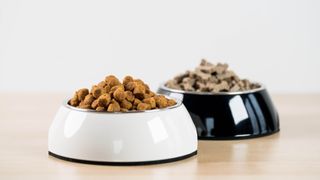
If you’re a pet parent, you’ll want to ensure your furry friends are fed regularly — just don’t feed mice in the process! “If pet food is left out or not stored securely, it can attract mice,” agrees Stewart. “These often contain a mix of proteins, fats, and carbohydrates, making it a well-rounded food source for mice.”
Ensure you remove any leftover pet food from bowls/sources from the kitchen after use, and immediately clean up any spills or messes. Overall, it’s essential to maintain good sanitation, and know how to clean every room in your home, with one of the best vacuum cleaners and regular sweeping and mopping floors.
Foods that mice don’t like
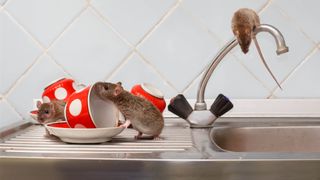
Similarly, there are certain foods and smells that repel mice, and should keep them far away. “Much like humans, there are some smells that mice absolutely hate – weirdly enough, they are some of the ones we love to cook with!” says Philips, “Garlic, peppermint and spicy scents like cayenne pepper drive mice crazy, and they have a very sharp sense of smell.”
Alternatively, you could try these plants that keep mice and rats from invading your home. These specific plants are known for their fragrant properties that are supposed to keep rats and mice away.
Of course, if you still suspect you have a pest problem, it’s best to call in a pest control company to give you the best advice and course of action.
More from Tom's Guide

As the Homes Content Editor, Cynthia Lawrence covers all things homes, interior decorating, and garden-related. She has a wealth of editorial experience testing the latest, ‘must-have’ home appliances, writing buying guides and the handy ‘how to’ features.
Her work has been published in various titles including, T3, Top Ten Reviews, Ideal Home, Real Homes, Livingetc. and House Beautiful, amongst many.
With a rather unhealthy obsession for all things homes and interiors, she also has an interior design blog for style inspiration and savvy storage solutions (get rid of that clutter!). When she’s not testing cool products, she’ll be searching online for more decor ideas to spruce up her family home or looking for a great bargain!
